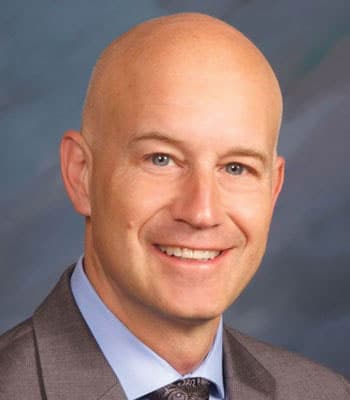Spur-of-the-moment decision results in Louisville startup

LOUISVILLE — He had a choice while driving over a bridge in Yemen where he was studying Arabic.
Either hit a truck head-on or go off the bridge.
He chose the latter, suffered a spinal injury, permanently lost use of his legs and entered a period of severe nerve-damage pain that changed everything.
That was 1992. Richard Hanbury, a native of the United Kingdom who since 2016 has called Louisville home, beat the odds. He was given a five-year life expectancy. He set about trying to figure out how to get relief from his pain and developed a technology that gave him relief. He then went on “a 30-year mission to get it into other people’s hands.”

His medical story is part-and-parcel of the development of the technology, which is now in the hands of the U.S. Food and Drug Administration for consideration as a pain treatment for those suffering from fibromyalgia.
“In hospital, they gave me the idea of meditation [to alleviate pain]. The problem is that if you’re already in pain or anxiety, meditation doesn’t necessarily work. Opioids take away consciousness. Meditation gives you more consciousness.”
He described his experience watching the Bruce Willis movie “Hudson Hawk,” where he was first laughing, then bored, then laughing, then bored. “It put me into a flow state,” he said.
A flow state might be described as being “in the zone,” experiencing a sense of mind and body connectivity and focus.
“I started researching what that state of consciousness does. If I had meditated all my life, I could have accessed these states that I had experienced before. That was my initial brain idea. I looked at 50 years of Western research about how long-term meditation changes the mind.”
He came across the research of British scholar Maxwell Cade, who’s work studied the connection between the mind and the body. The “awakened mind” is how Hanbury described it.
Hanbury postulated that if he could change how his mind worked, he could get relief from his pain.
He used tools that Cade developed to track brain activity, and through trial and error, he used audiovisual stimulation — pulses of light and pulses of sound — and found relief. He said modern medicine might use a large magnet to cause changes in the brain, but that treatment isn’t available for home use because of the size of the magnet, and it can be expensive.
His invention, called the Sana Device, achieves the same result at home because a person can use it multiple times a day for short periods.
The word “Sana” comes in part from the name of the Yemen capital, Sana’a. In Arabic, Sana means “brightness.” In Latin, it means “healthy.”
“In almost every language, the word has a healthful meaning,” Hanbury said.
While the origins of the company, Sana Health Inc., dates to 1993, the development of wearable technology in recent years gave new life to his efforts to monetize and scale the company.
Brexit — the exit of the United Kingdom from the European Union — threw a wrench into the works because of the uncertainty that resulted for medical-device creators. Hanbury packed up and moved to San Francisco.
He hired a chief operating officer who suggested that a move to Colorado would help the company recruit the kind of people he would need to bring his product to market. Louisville became his home, and Meddux Development Corp. LLC in Boulder became his contract manufacturer.
Hanbury has 23 employees in Louisville and expects to grow as the company receives FDA approval for its product.
Hanbury has been marketing the Sana device as a wellness device but expects FDA signoff to accelerate the company’s growth.
His device is now before the FDA for consideration as a treatment for fibromyalgia pain, and he hopes for a decision in the first quarter of 2023. Once that occurs, he’ll seek approval for use of the device on neuropathic pain, and then for treatment of PTSD.
While he’s sold about 2,000 units as a wellness device, FDA approval will open doors to insurance reimbursement for users and thus expand the market.
And the market is huge.
“Opioids don’t work for long-term chronic pain,” he said. “The risk/benefit ratio changes after about five days. One in four Americans takes a psychoactive drug every day [legal or illegal.] If you took every single mental health professional in the country, and had them working at 95% efficiency, you could reach about 6% of the population,” Hanbury said.
The gap in treatment can be filled with tools like the Sana Device, he said, and used in concert with other treatments can “make everything else work better.”
The company has attracted the attention of investors. He said Sana Health has raised $23 million in three rounds of fundraising.
It has caught the attention of organizations that recognize cutting-edge technology. It recently received a $100,000 award from the Otto Awards, which recognized Sana’s origin story.
The company this year also received a Homeland Security Grant of Resilience and a U.S. Department of Defense grant for pain and sleep research at Brooke Army Medical Center in Texas. Last year, the company received an FDA grant for PTSD research as a potentially breakthrough device.The Sana Device is available on a subscription basis, with terms outlined on the company website. An 18-month plan at $99 per month results in ownership of the device.
Source: BizWest





